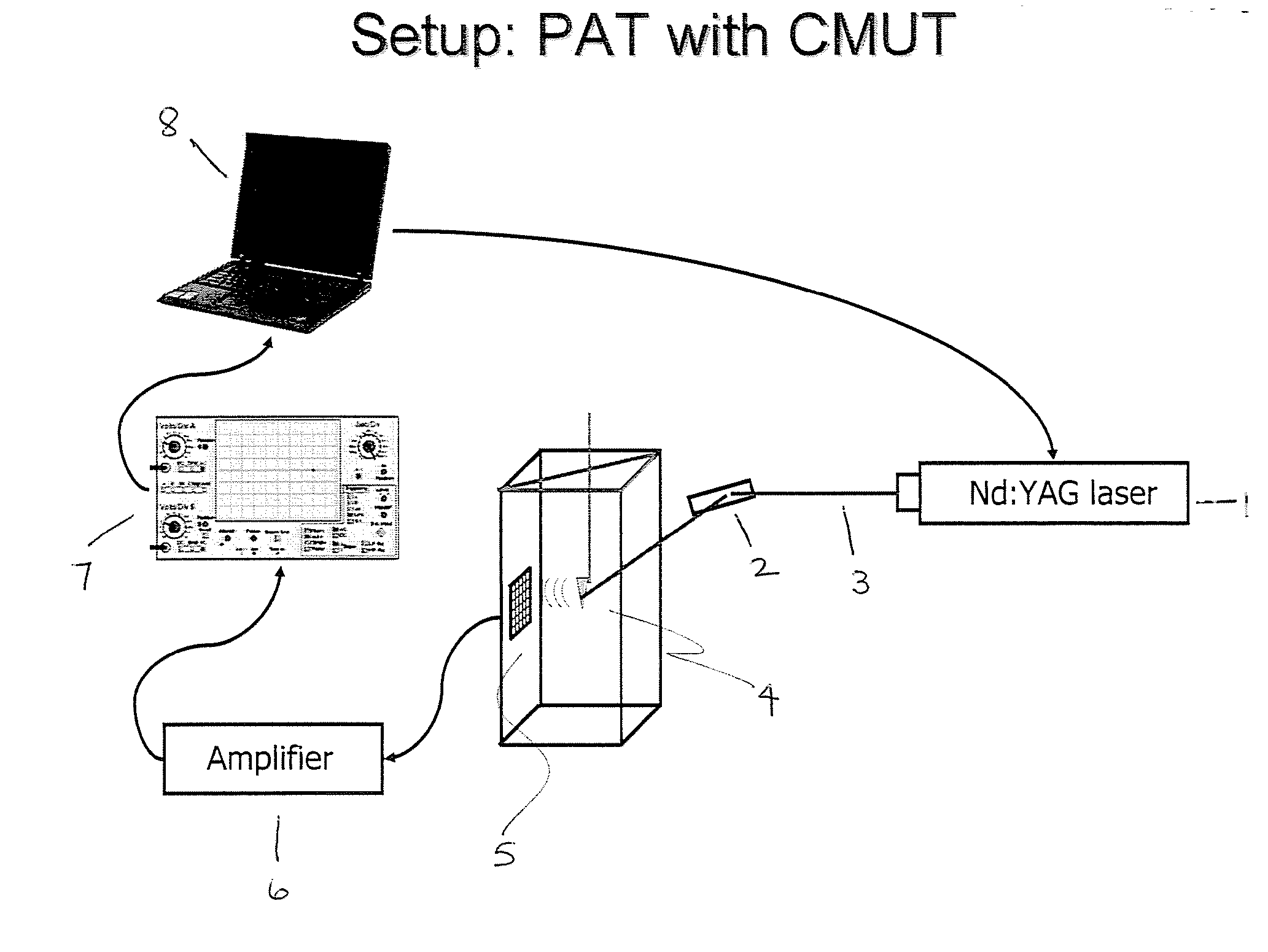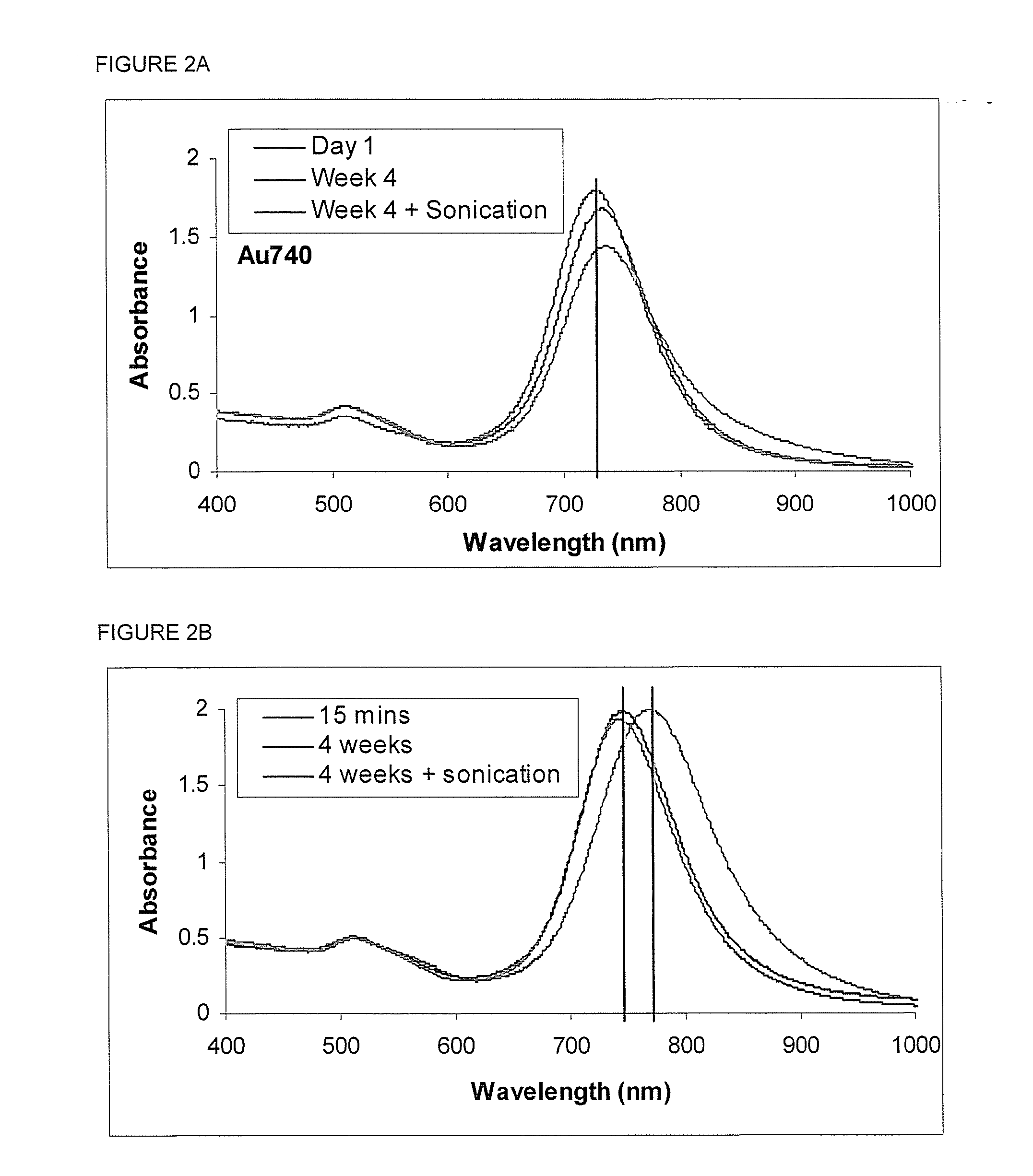Photoacoustic contrast agents for molecular imaging
a technology of molecular imaging and contrast agent, which is applied in the field of multimodality imaging techniques, can solve the problems of unattainable or prohibitively expensive single imaging modality optimization, limited general use of photoacoustic imaging methods to relatively thin biological samples, and achieves the effect of improving signal
- Summary
- Abstract
- Description
- Claims
- Application Information
AI Technical Summary
Benefits of technology
Problems solved by technology
Method used
Image
Examples
example 1
Synthesis of Composite Contrast Agents
Methods
[0079]Lipids used in synthesis of contrast agents are:
[0080]phosphocholine
[0081]PDA
[0082]and optionally include 1-10% biotinylated lipid.
[0083]The lipid solutions are evaporated to dryness and dried under high vacuum to remove any residual solvent. The dried lipid film is hydrated to a known lipid density (15-30 mM) using deionized water, in combination with the inorganic core particles. The resulting suspension is then sonicated at temperatures above the gel-liquid crystal phase transition (Tm @ 64° C.) for 1 hr. using a probe-tip sonicator while maintaining the pH between 7.0 and 7.5 using a 0.1 M sodium hydroxide solution. The solution can be sterile filtered through 0.2 mm filter and stored under argon at room temperature.
[0084]An avidin / antibody complex, using an LM609 antibody, which is specific for the integrin αvβ3 (see Sipkins et al., (1998) Nat. Med. 4:623-626) is combined with particles having biotinylated lipid in a ratio of 1...
PUM
 Login to View More
Login to View More Abstract
Description
Claims
Application Information
 Login to View More
Login to View More - R&D
- Intellectual Property
- Life Sciences
- Materials
- Tech Scout
- Unparalleled Data Quality
- Higher Quality Content
- 60% Fewer Hallucinations
Browse by: Latest US Patents, China's latest patents, Technical Efficacy Thesaurus, Application Domain, Technology Topic, Popular Technical Reports.
© 2025 PatSnap. All rights reserved.Legal|Privacy policy|Modern Slavery Act Transparency Statement|Sitemap|About US| Contact US: help@patsnap.com



